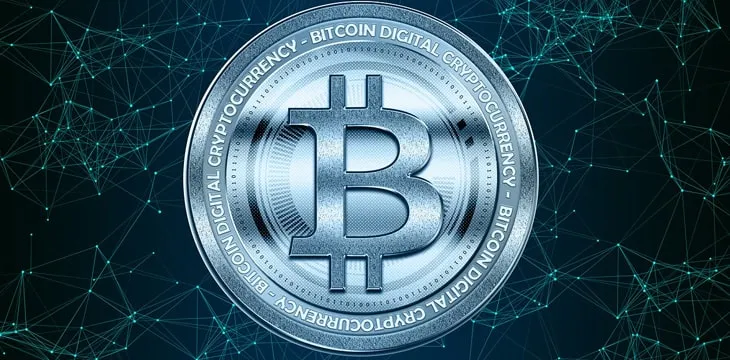|
Getting your Trinity Audio player ready...
|
Let’s talk about the way the mainstream media talk about digital assets. A recent article we saw from a Forbes contributor about the Chainlink token highlighted some of the problems that have led the public to misunderstand Bitcoin, and naive investors to lose their savings.
The problems aren’t just with the way media articles presents information, but also with the infrastructure that supports it. There are exchanges who trade tokens alongside Bitcoin and other native blockchain assets, and data sites that list and compare them as if they’re the same thing.
The article was titled “This Bitcoin Challenger Is Suddenly Soaring And Fast Approaching Its All-Time High Price”. However this isn’t a unique example; there have been thousands of articles like this over the years.
You can probably see a few problems in the headline already. First, there’s yet another reference to a “Bitcoin challenger” (of which there have been thousands now). Then there’s the focus on price, and an implied call to jump in before it’s too late. But first, let’s clear up the tokens/assets issue.
Bitcoin, altcoins and tokens
Bitcoin, altcoins and tokens are all digital assets, but there are big differences in what they are, what they’re intended for, and what they do. There’s nothing inherently wrong with tokens, but not knowing the difference is one of the reasons digital assets have gained such a bad reputation in investor circles.
The digital asset space includes Bitcoin, altcoins, and tokens. Bitcoin is the first and only legitimate asset here—it’s the only one capable of scaling to meet the entire world’s demands. And when we say Bitcoin, we mean BSV.
An altcoin is a digital asset that is not Bitcoin, but is still the “native” asset on its blockchain. Even these assets differ: only those based on proof-of-work (POW) transaction processing contain the necessary economic incentives in their protocols to function effectively. Those based on proof-of-stake (POS) or hybrid POW/POS processing algorithms have warped incentives and are open to manipulation.
Tokens are another thing entirely. They exist as smart contracts on another blockchain—for example, ERC20 standard tokens on Ethereum, EOS or similar. Their ownership can be transferred or traded like any asset, and the records of such recorded on a blockchain, but their nature makes them fundamentally different to Bitcoin and altcoins. If the base blockchain fails for some reason, so do all the contracts and tokens that live on it.
Then there are assets that are “native” on their protocols, but use a different non-blockchain-based system entirely. The best known examples of this are Ripple XRP and Stellar Lumens.
Chainlink’s tradeable asset is called “Link”, and it’s a token based on an Ethereum contract. So it’s clear that Link, whatever its utility, is no “Bitcoin challenger” as it depends on Ethereum to exist. Tether (USDT), the popular “stablecoin” nominally (but not actually) backed by actual USD reserves, is actually a number of different tokens living on multiple blockchains.
(Some) tokens are OK
As mentioned above, there’s nothing inherently wrong with the concept of tokens. The problems arise when they’re presented as something equal to Bitcoin or other native blockchain assets, and/or traded as speculative assets regardless of their actual utility.
The Forbes article mentions: “Chainlink’s recent gains have also been attributed to the world’s largest bitcoin and cryptocurrency exchange by volume, Binance”. Binance, and other similar exchanges, became popular by listing hundreds, if not thousands of tokens alongside Bitcoin. Market data sites usually compare their prices, market caps and trading volumes as one big list without any explanation of the difference. These practices have led to speculative bubbles, price pumps and money-losing drops like the “ICO” frenzy of 2017-18.
For the record, we’re not suggesting Chainlink itself is a bad idea, or that the Link token has no value or utility. It’s a decentralized oracle network that “facilitates connectivity through the use of external adapters, which connect oracles to any API endpoint.” This would allow smart contracts of any kind to hook into data sources, extending their functionality.
In fact, developers at Google Cloud have built trial demonstrations with Chainlink, using its nodes to listen for API calls, execute the job requested, and make payments to the source. Google Cloud Developer Advocate Allen Day wrote that Chainlink could be used in prediction markets, hedging against blockchain platform risk, and enabling commit/reveals across Ethereum using submarine sends.
It could be a pretty useful and feasible project—if it lived in Bitcoin BSV. Unless it’s capable of migrating at some stage, it could face future issues with Ethereum’s scalability and the uncertainty surrounding its protocol.
Don’t worry about all that, just pump the price
The Forbes article we saw, written by a “crypto and blockchain contributor,” devotes only two lines to what Chainlink actually does—and only mentions the Google trials briefly in its final sentence.
The rest of the article is devoted to the Link token’s price, percentage gains, and comparisons to BTC’s price performance in the past few months. It’s a strange parallel to draw, given the two assets are completely different things, but it’s clear where the author’s priorities lie and what he’d like readers to do.
Poor communication of the differences in digital asset type, structure, purpose, and utility has caused all of them to be mislabeled “cryptocurrencies.” It has led many an uninformed investor to leap blindly into the ocean of unregulated exchanges, with a false belief that a “Bitcoin challenger” is ready to roll, and that buying in is the path to quick riches.
Usually it isn’t—without that knowledge, it’s more like an invitation to stay holding an expensive yet worthless bag long after all the speculators have moved on to the next target. Unfortunately, mainstream media sites use their famous brands to draw traffic and dollars, feeding the speculation beast another meal.
Exchanges and data sites could help by listing public proof-of-work assets separately to proof-of-stake ones, and tokens on their own platform. But since their income depends on not highlighting these differences, we won’t hold our breath waiting for current offerings to do that.
Only Bitcoin BSV can provide the scalability and stability future utility tokens will need to serve enterprise-class applications. The tokens themselves need to be useful, and trading should be only for usage, not price pumping. And if they haven’t already learned the hard way, readers would be better served if they paid attention to trusted news written by experienced blockchain reporters. These articles will at least examine the technology and won’t try to sell anything.

 06-30-2025
06-30-2025 





